[ad_1]
DAVAO CITY, Philippines — Hundreds of garbage flies infest homes, flying from waste to food, to children. Families eat and the smell of the dumpsite continues to linger. It was almost noon and waste pickers like Virgilio Romero*, 44, scavenge waste on the mountain of garbage under the scorching 51-degree celsius heat.
This is the everyday scene at the eleven-year-old seven-hectare sanitary landfill located in New Carmen, Tugbok — Davao City’s only sanitary landfill.
According to the City Environment and Natural Resources Office (CENRO), the city generates around 900 tons of garbage per day, and waste pickers like Romero find a living by recycling the dumpsite’s overflowing waste.
“This has been our family’s livelihood since we moved to the city. It was what was expected as I didn’t finish my studies, and there weren’t any suitable jobs for me since I do not have a degree,” said Romero.
Romero comes from a family of landless peasants in Mati, Davao Oriental, tilling farmland less than a hectare in size. He doesn’t earn money from working in the field and is only paid for his labor with a portion of their produce.
At New Carmen, he takes home P200 daily for scavenging for plastics, cans, and sacks for 11 hours from 6 a.m. – 5 p.m. Romero said that life as a waste picker hasn’t been easy, but it’s better compared to not earning anything when he was a farmer.
However, by 2023, the landfill where Romero resides and finds a living will be unserviceable as the rapid urbanization and poor waste segregation of Davao will drive it to its full capacity.
And as a response to the city’s waste crisis, the local government of Davao City plans to construct a P2.5 billion waste-to-energy (WTE) facility, funded by a Japanese loan, on a 10-hectare property in Biao Escuela in the Tugbok District.
The landfill will close down and be converted to a separate area for the WTE facility. Over 100 waste pickers are asked to leave.
“We don’t know what will happen to us and our homes. They began measuring houses, promising to compensate us for P30,000. Until now, they don’t have a concrete plan for us,” said Romero.
The climate crisis is fuelled by waste
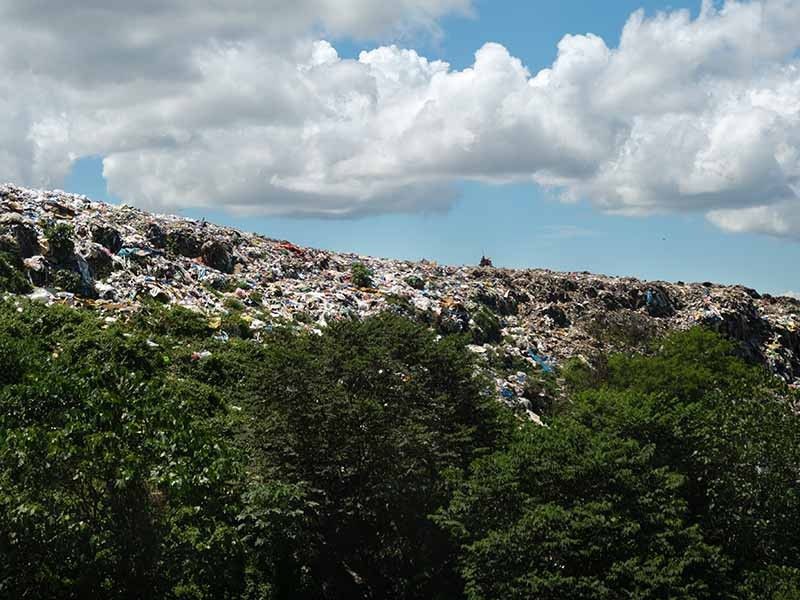
New Carmen dumpsite: Mountain of trash
The local government eyes the WTE incinerator as a “long-term solution” to its solid waste problem. Household garbage could be used to produce energy by replacing oil and coal.
Greenpeace and the Plastic-Free Pilipinas Project oppose this technology, arguing that non-biodegradable materials are no different to burning fossil fuels. Plastics, after all, are made from fossil fuels.
Marian Ledesma, Greenpeace’s zero-waste campaigner, stated that the whole idea and scheme of burning waste to generate energy is unnecessary and counterproductive to the goal of reducing waste.
“It even encourages cities to produce more waste, because these incinerators would require a minimum amount on a daily and weekly basis to produce energy,” she said.
Ledesma said that the WTE incinerator also goes against the country’s Republic Act 9003 or the Ecological Solid Waste Management Act of 2000, a law designed to promote zero-waste practices and waste segregation. It is also prohibited under Section 20 the Clean Air Act.
“WTE projects are an easy solution to the waste crisis. And it attempts to address the waste problem without changing problematic parts of the system, beginning from plastic production,” she said.
Because these facilities are not climate-friendly and actually worsen climate crisis, the European Commission has defunded WTE incinerator project funding.
Ledesma said that perhaps the reason that groups and loans are pushing for WTE projects in developing countries like the Philippines is that this technology is already being questioned in developed nations.
“If you look at WTE, it’s no longer included in EU sustainable economic activities. And because they’re not able to market in their region, they push that narrative in poorer regions where laws and policies have not yet decided if the technology is eco-friendly. They are banking and trying to find a way of investment elsewhere,” she explained.
She also pointed out that these types of projects are often located in low-income communities where communities are more susceptible to climate impacts due to dirty technology.
No proper consultation
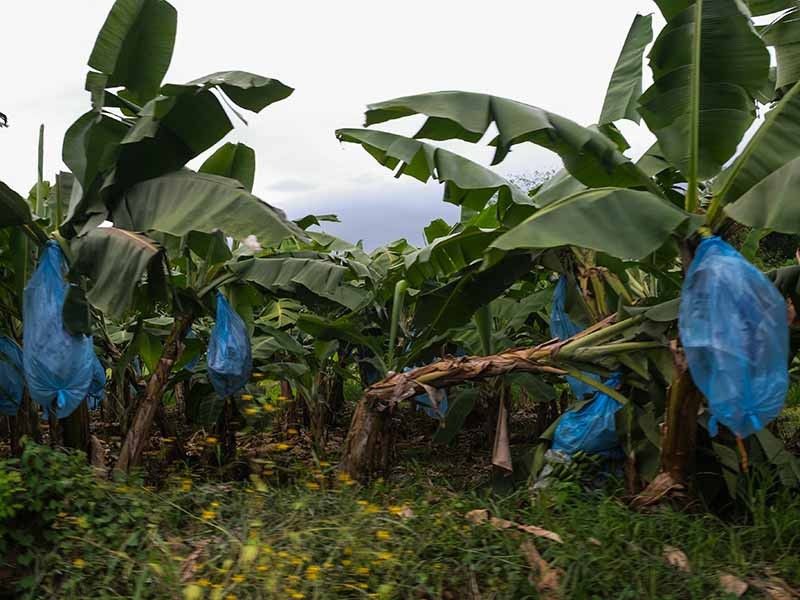
Biao Escuela, an agricultural community, is surrounded by coconut and banana plantations. The livelihood of the residents is dependent on farming and raising poultry.
Biao Escuela will host the WTE facility. It is located on a 10-hectare parcel of agricultural land in the south of Davao. The proposed site is only 2.2 kilometers away from the barangay’s school and 550m from the planned relocation site.
Jill Banta is the regional coordinator for Mindanao at the Plastic-Free Pilipinas Project. She stated that the facility could also have long-term impacts on residents of Biao Escuela or nearby communities.
Plastics are burned to create persistent organic pollutants like dioxins, furans, and other harmful chemicals. This can cause respiratory and reproductive diseases, birth defects, and cancer to the already marginalized low-income agricultural communities in Biao Escuela,” said Banta.
“Beyond the community, its toxic by-products may reach our plates through the food chain because food and poultry products are sourced in Biao Escuela,” she added.
Nerea Tagunon*, 60, is a sari-sari store owner at Biao Escuela. After being displaced by road widening in Catalunan Grande and Davao, her family moved to the community 3 years ago.
Tagunon and her neighbors weren’t properly consulted about the project, and it’s common for residents of Biao Escuela to make uninformed decisions because of the lack of consultation with the local government.
Residents believe that the facility will be a plastic recycling plant, creating jobs. The WTE project may offer them employment, but residents don’t realize that the facility is only open to engineers.
“I think having the waste-to-energy incinerator project here would be helpful to our community because it will give us jobs,” said Tagunon.
“From the demographics of their community, who are mostly agricultural workers, poultry growers, and laborers, the only job they could secure would be short-term construction jobs for the facility,” said Banta.
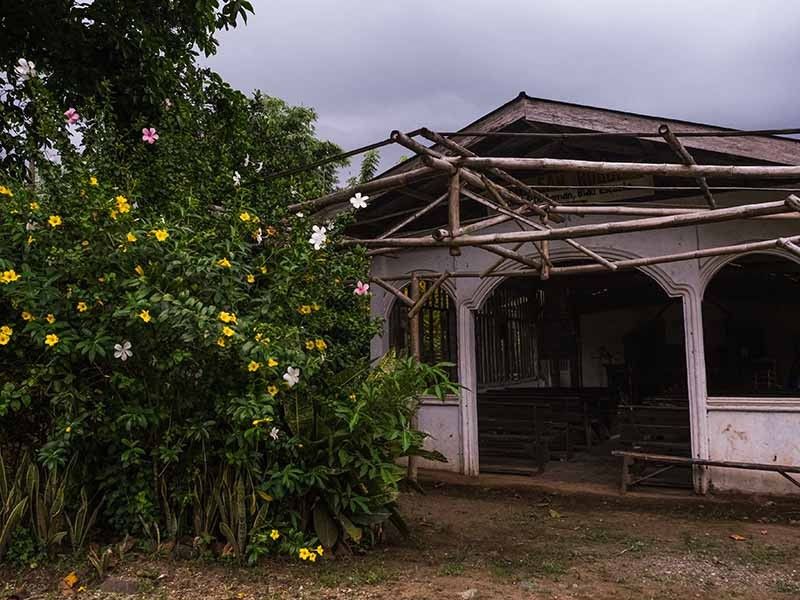
Chapel at Biao Escuela
Tagunon has lost all hope in fighting for their homes and right to proper relocation.
“If it’s going to smell, then what difference would it make? The river here is suffused with poultry waste, so it doesn’t matter if it smells like burning plastic. We’ll just be a place where you could inhale all the chemicals and bad odor. Let the government do whatever they want, we can’t do anything about it anymore,” Tagunon said hopelessly.
However, the 60-year-old resident admitted that she would prefer that the project not be pursued if they were properly consulted.
“Officially, nobody would like to be exposed, and nobody would want the waste to inhale. But we have already been displaced in the past, and it’s not like people like me still have a say,” she said.
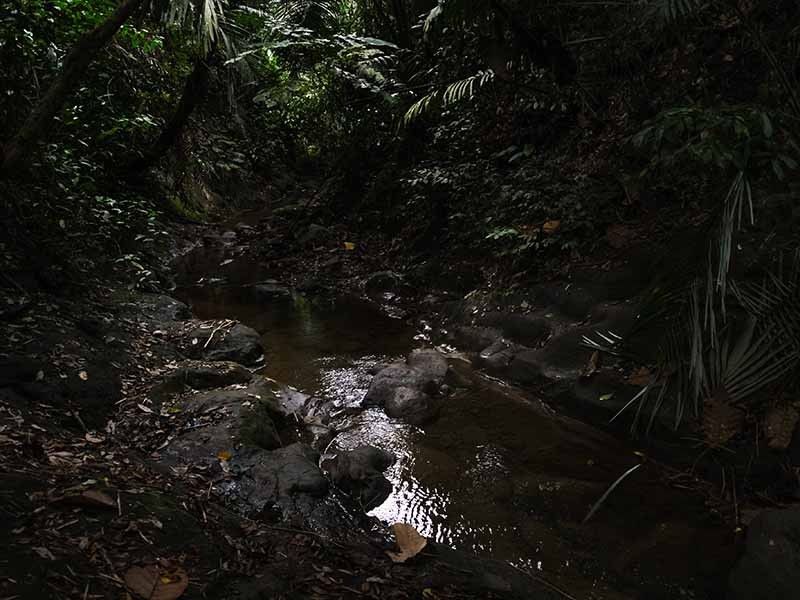
Waterway at Biao Escuela, which connects to Matina River
A few meters away from Tagunon lives Esmelita Roxas* 70, who, like Tagunon, knows little about the project.
“I’m worried about the effects of the incinerator, but our barangay captain said that the technology worked in Japan. We’re just putting our trust in him,” said Roxas.
“And even if we’re against it, we can’t do anything about it because we’re only ordinary citizens. We’ll be fighting against powerful people. At this point, we’re only praying that if it pushes through, we won’t be left behind.”
Working zero-waste solutions
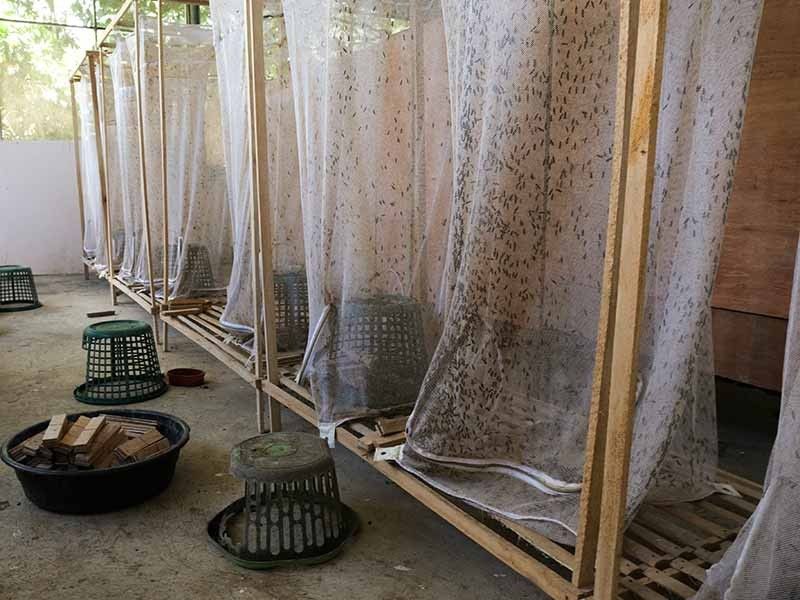
Inside Limadol’s facility where black soldier flies are grown
Ledesma and Banta said that the waste problem in Davao and the Philippines can be solved without burning plastics, especially when 50% of Davao’s waste is biodegradable, and while 200 to 300 tons of its landfill waste is food waste.
Peter Damary of Limadol, a Davao-based agronomist, introduced black soldier flies as a way to manage food waste. He developed a natural insect protein for poultry that uses biodegradable landfill waste.
They collect 400-700kgs of food waste from households and restaurants at Barangay Tacunan and Barangay Mintal four times per week, which they then feed to the black soldier flies that fly in their facility.
Black soldier flies eat food waste and create a byproduct called frass, which can be used as feed for poultry or organic fertilizers.
“At the start, it was very difficult, because people didn’t really segregate their waste. They were used to dumping everything because no one was in charge of segregating, and collectors just combine already segregated waste with each other,” said Damary.
From only collecting 60 kilograms twice a week in February 2021, Damary’s small business now collects 150 kgs of food waste three or four times a week.
“We were very strict in our collection, and we were able solve this problem. We took the time to educate households to segregate food waste, and eventually, they picked it up,” he added.
Today Limadol collects food waste from over 200 households and five restaurants around Barangay Mintal and Barangay Tacunan.
Damary stated that their system works because they’re consistent. He stated that people need consistency to be able to follow the rules.
He recalled that in the beginning, some households would still mix non-biodegradable waste with biodegradables, and to show their commitment, they didn’t pick up food waste that wasn’t well segregated.
“They eventually followed, and they are now very enthusiastic about it,” said Damary.
Methane is a major greenhouse gas that forms when food is left to decompose anaerobically in landfills.
Extra Food estimates that every 100 pounds worth of food waste dumped in landfills releases 8.3 pounds of methane into our atmosphere. Methane has an 86-fold global warming effect over carbon dioxide in 20 years.
“Methane from food waste contributes to the climate crisis, and if we have systems in place then this initiative will not only be beneficial for waste management but also climate mitigation,” explained Damary
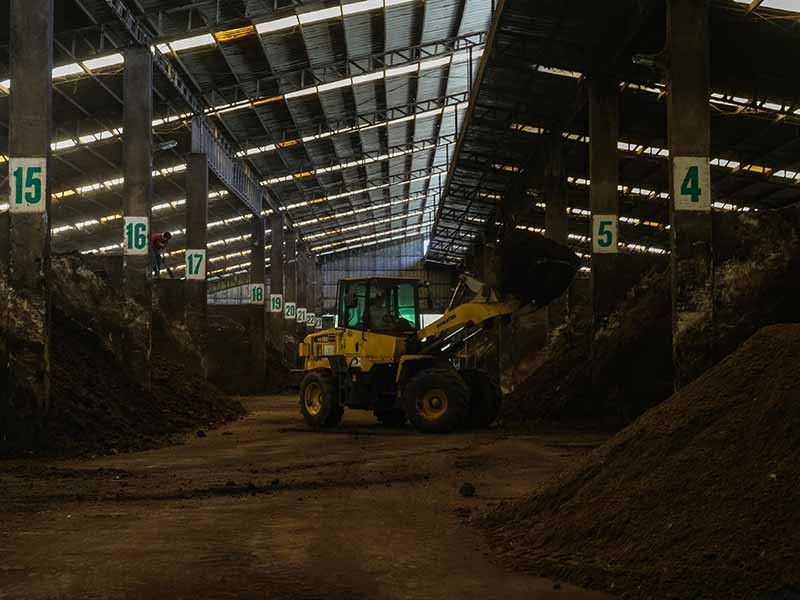
Davao Thermo Biotechnology’s composting site
A bio activator creates an odorless landfill that separates tons of biodegradable trash from industrial companies and restaurants within an hour from Barangay Mintal.
Aimea Lumpay is the plant manager at Davao Thermo Biotech. She said that their composting facility uses a patented YMO activater from Japan.
“We mix our YMO activator and collected biodegradable trash to treat them together. By doing this, we hasten the composting of biodegradable waste and eliminate hazardous waste such as leachate from contaminating the environment,” explained Lumpay.
Within 45 days, biodegradables can be converted into biofertilizers. The reaction of the food waste with the bio activator heats up the mixture to a high temp which kills pathogenic bacteria. This makes their fertilizer organic, safe, and clean.
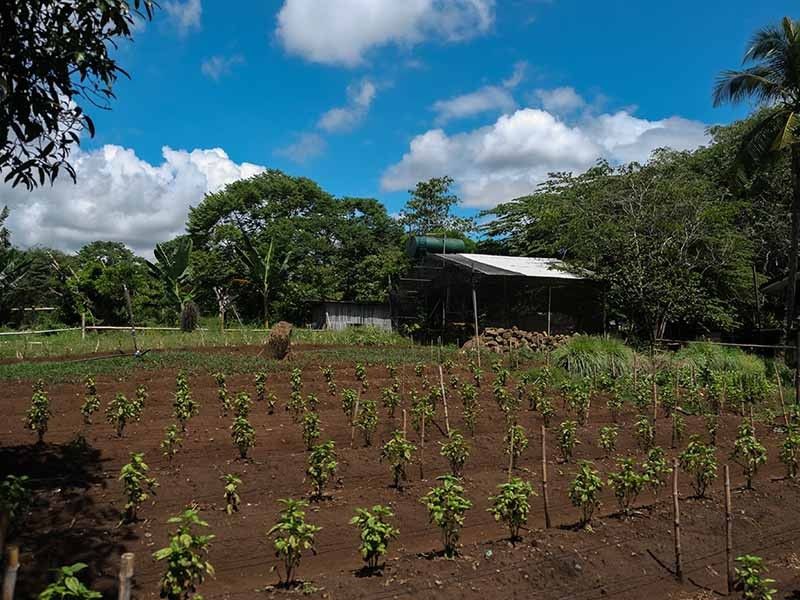
The biofertilizer Davao Thermo Biotech was used in their trial farm on their four-hectare composting site
Davao Thermo Biotech currently collects food and industrial waste from several poultry farms. They handle 50MT of industry- and food waste per day.
They also have a few household subscribers, and the technology can also be adapted at a household level, but the problem is not a lot of homes are willing to pay to have their garbage collected and treated so they don’t end up in landfills.
“As of right now, we have 55 households who are registered with our waste management facility. We pick up their biodegradable waste for them, and in exchange, we give them one of our products which they can use for their gardens at home,” said Lumpay.
Banta stated that Limadol’s and Davao Thermo Biotech’s zero-waste projects are proof that there are already zero-waste solutions that are less harmful for the environment.
“Instead of using people’s money to fund environmentally destructive projects, the government should instead invest in solutions that are already in place,” said Banta.
“The projects of Limadol and Davao Thermo Biotech need not have huge large facilities, and if these are implemented on a large scale, then there would not even be a need to construct WTE facilities,” added Banta.
The Plastic-Free Pilipinas Project regional Coordinator also stressed that although these initiatives work for biodegradable and recyclable wastes, the problem with non-biodegradable trash can be addressed through strict implementation of banning single-use disposable plastics and requiring corporations to change their packaging.
Companies should invest in solutions that focus on reuse-based packaging, such as refillable. They can show this by not relying on false “green” solutions but committing to establishing sustainable systems.
Banta said that before the sachet-based economy arrived in the Philippines, Filipino communities had a tradition of refilling in sari sari stores. But, due to the shift of packaging by fast-moving FMCG companies, this changed.
“Didn’t we have that deposit system for carbonated drinks in glass bottles before? It was even practiced in far-flung rural areas. We can enforce zero-waste solutions, but corporations and lawmakers lack the will,” said Banta.
Seventy-two per cent of the 2022 national budget to manage solid waste will be allocated to the WTE Davao.
“That’s too much of a budget for a regional project that is environmentally destructive. Imagine if we reallocate our budget and invest in low-cost zero-waste solutions that are already in place,” said Banta.
She also stated that the money could have been used to train waste workers in zero waste projects, give them solid waste management training, as well as increase their salaries and benefits.
“Waste management plays a large role in the climate crisis because the life cycle of a product or waste is already producing carbon emissions, which is why just energy transition also means hiring more waste workers, integrating waste workers in zero-waste projects, and institutionalizing their work,” said Banta.
The role of waste pickers during the climate crisis
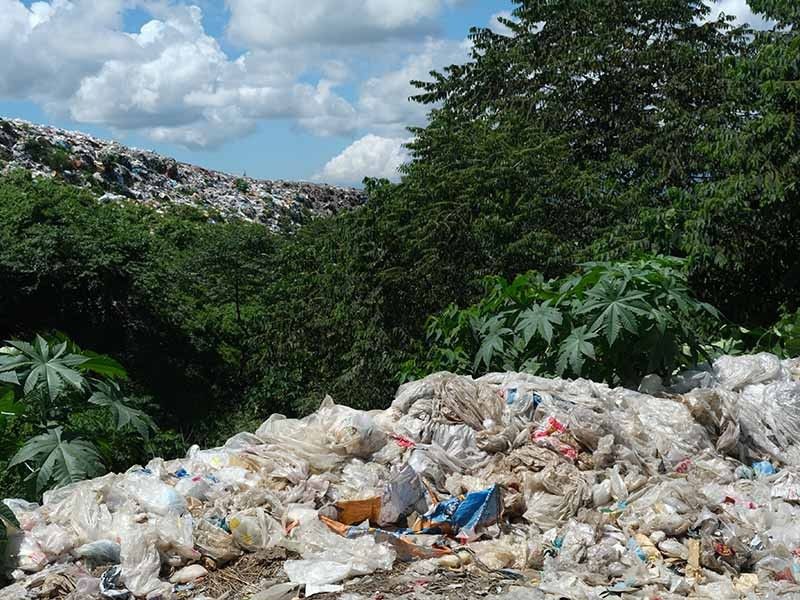
New Carmen Landfill overflowing with waste
Back in New Carmen, Romero said that while he isn’t familiar with climate change, he’s sure that their work as waste pickers contributes to addressing the waste problem.
“I’m not sure about numbers, but perhaps, waste pickers like me address climate change by 50% because we recycle everything that we could find,” said Romero.
Banta and Ledesma are concerned about the negative environmental repercussions of WTE.
“We already have people who pick up and recycle waste, and there are also groups that upcycle, recycle and compost. What will happen when the project gets a go-signal? Banta asked.
Romero stated that rather than removing them from their livelihoods, the local government could show their appreciation by giving them the support they need to keep doing their jobs.
“We aren’t protected from our jobs, we go to work without proper equipment, we even step our bare feet on broken glass just so we could find a living, but still we can recycle a relevant amount of waste without much help,” he said.
“What we need is an aid in terms of food, shelter, and even medicine because we earn so little, so that we may continue working,” added Romero.
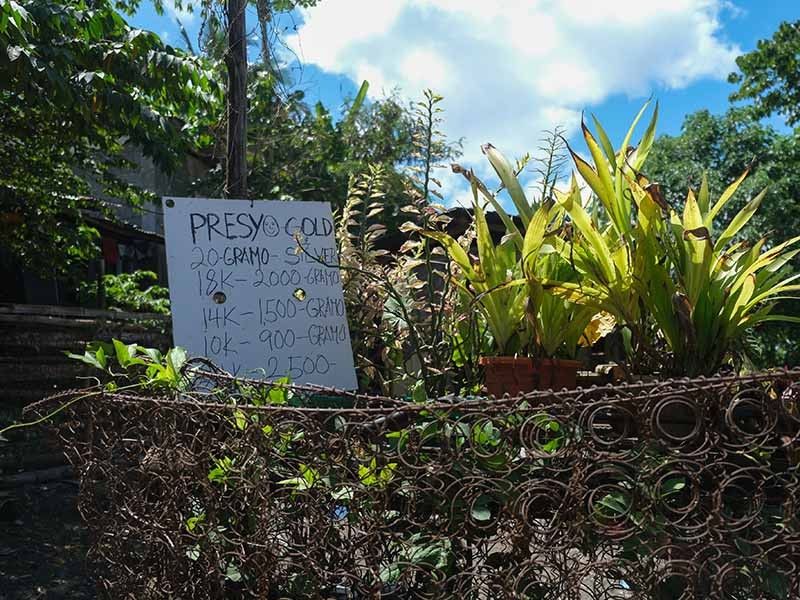
The dumpsite is a gold mine for waste pickers
Romero recalled that their measly income isn’t even enough for his family to afford electricity. Romero is happy to find disposed candles at the landfill, which they recycle and then light at night.
“Sometimes we even find solar panels that are broken in the dump.” We fix them, and they give our homes power and electricity,” said Romero.
Ledesma said that waste pickers are knowledgeable of the integrity of materials found in disposal sites, that’s why they should play a significant role in redesigning systems.
“Without us no one would dare touch our wastes. And if we’re displaced of our livelihood, you’re also removing hands directly reversing climate change,” said Romero.
—
*Names were changed to protect identities
Climate Tracker and FES Philippines supported this story
Geela Garcia, a freelance multimedia journalist and peasant advocate, is based in Manila.
!function(f,b,e,v,n,t,s)
{if(f.fbq)return;n=f.fbq=function(){n.callMethod?
n.callMethod.apply(n,arguments):n.queue.push(arguments)};
if(!f._fbq)f._fbq=n;n.push=n;n.loaded=!0;n.version=’2.0′;
n.queue=[];t=b.createElement(e);t.async=!0;
t.src=v;s=b.getElementsByTagName(e)[0];
s.parentNode.insertBefore(t,s)}(window, document,’script’,
‘https://connect.facebook.net/en_US/fbevents.js’);
fbq(‘init’, ‘1894659447519136’);
fbq(‘track’, ‘PageView’);
(function(d, s, id) {
var js, fjs = d.getElementsByTagName(s)[0];
if (d.getElementById(id)) return;
js = d.createElement(s); js.id = id;
js.src = “//connect.facebook.net/en_US/sdk.js#xfbml=1&version=v2.8&appId=1775905922621109”;
fjs.parentNode.insertBefore(js, fjs);
}(document, ‘script’, ‘facebook-jssdk’));
[ad_2]




